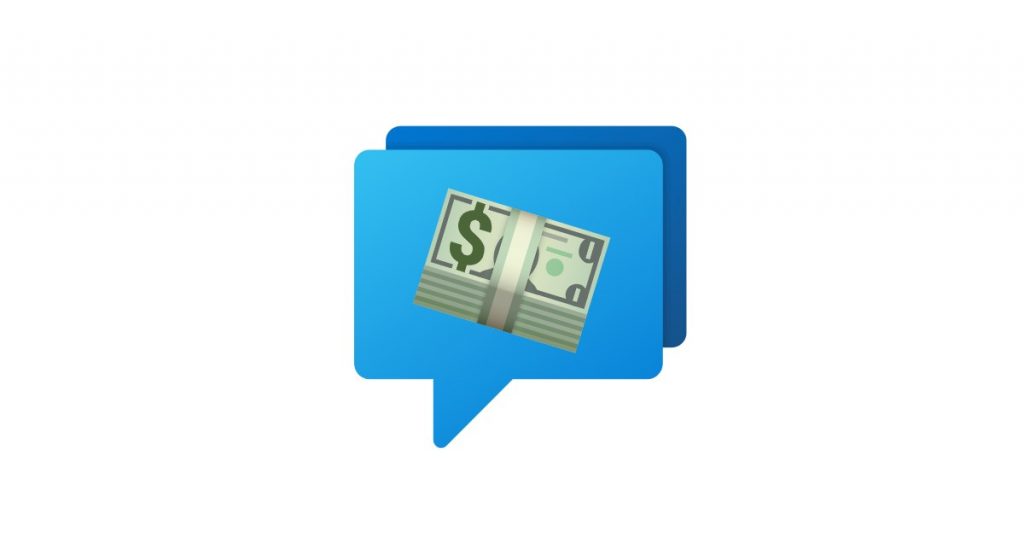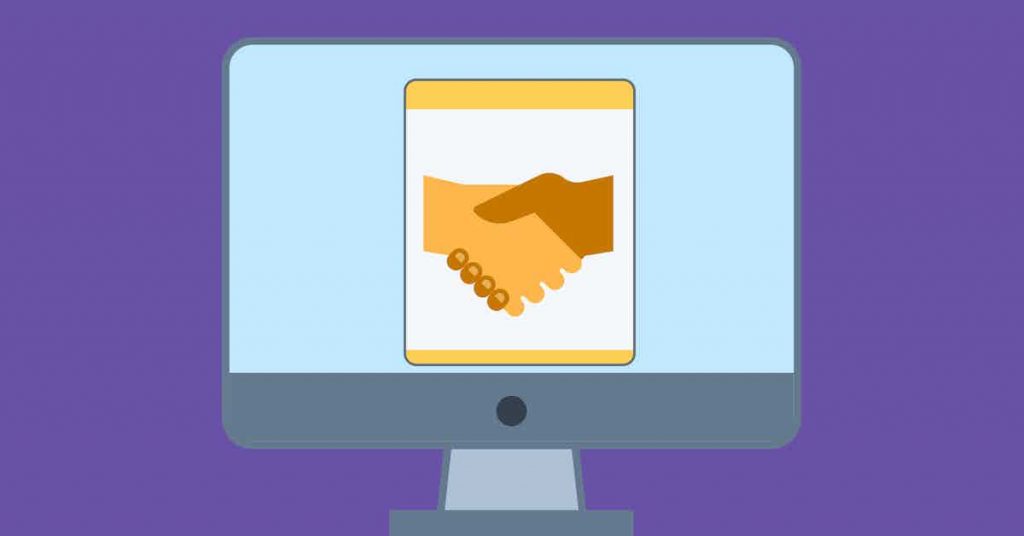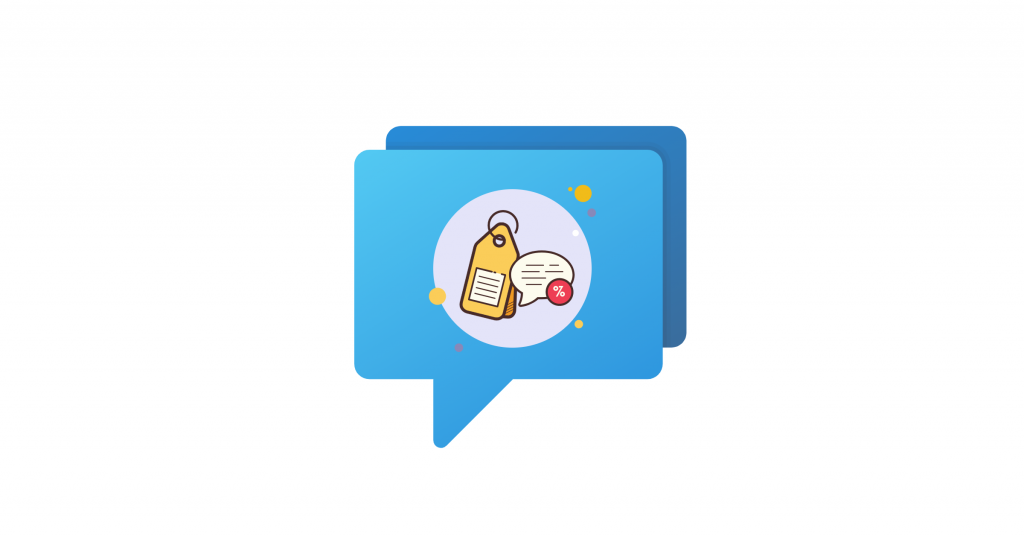More and more businesses are implementing live chat to improve customer satisfaction and sales , but the big question remains:
How exactly does live chat increase conversions?
To get to the bottom of this, we have dug deep into the data. We’ve looked at conversion rates, customer feedback, and interaction times to determine if this popular tool truly makes a difference.
BONUS: We have also compiled 10 proven live chat tactics to help you increase conversions even further.
Does Live Chat Increase Sales? Key Statistics You Need to Know
The following live chat statistics demonstrate the power of live chat solutions for boosting online sales:
- Importance of live chat: Customer support statistics show that 42% of online customers prefer to communicate via live chat for customer service.
- Influence on purchases: According to a survey, 38% of respondents made their purchase due to a chat session.
- Frequent buyers: A survey noted that respondents who hadn’t used live chat were more likely to be infrequent online buyers, with 36% making a purchase less than once per month compared to 18% of chat users.
- Customer satisfaction: 73% of customers find live chat to be the most satisfying way of communicating with a business. [Invesp]
- Likelihood to purchase: Engaging with a live chat agent makes visitors 2.8 times more likely to purchase a product. [CampaignMonitor]
- Satisfaction rate: Live chat boasts the highest consumer satisfaction rate at 92%. [99Firms]
- Revenue and conversions: Websites with chat support reported a 19% increase in revenue and a 38% increase in conversions. [99Firms]
- Customer service satisfaction: A 2013 survey by eDigital found that live chat has the highest satisfaction levels for any customer service channel at 73%, compared to 61% for email and 44% for phone calls.
- Conversion rates: Adding a live chat feature to a website can lead to a 20% increase in conversion rates. [V-count]
- Lead generation: Live chat can increase leads by 40%. [Common Places Interactive]
- Impact of engagement: One reply via live chat can increase conversion chances by 50%. With one more reply, the visitor is 100% more likely to convert. Exchanging six messages can increase e-commerce conversion likelihood to nearly 250%. [Inflow]
- Case study example: In a conservative analysis for a client selling specialty pen kits, overall conversion rates increased by 3.84% and revenue saw a 6% overall lift after implementing live chat.
- Personalized communication: The tailored communication enabled by live chat can increase customer engagement by up to 55% and boost conversion rates by 51%. [SmarterHQ]
Why Does Live Chat Increase Conversions?
Live chat is a real-time communication channel that allows online visitors to interact with your customer service and sales teams through a chat widget embedded in your website.
Here’s why live chat solutions do increase conversions:
Easy access improves customer engagement
Typically, a live chat widget is conveniently located in the bottom-right corner of a webpage. This placement means that visitors can easily spot it and use it to ask a question or request assistance.
Without a live chat tool, visitors have to navigate through multiple pages to find a contact form or email address. This process is undoubtedly frustrating and time-consuming.
The result? Potential customers abandon their queries altogether and you miss opportunities to convert leads into sales.
Live chat software enables instant responses and ensures visitors get the help they need the moment they need it. This not only boosts conversion rates but also encourages customers to engage with your brand at any point in their journey.
With immediate answers to their questions, they can move forward confidently without any lingering doubts, leading to a better experience from start to finish.
Speedy assistance
Responsiveness is crucial: one in five customers will stop using a product if a brand is slow to respond via online chat.
With live chat, consumers only have to wait 35 seconds on average to connect with a support agent.
This speed outpaces any other traditional customer service channel, making live chat the preferred method for speedy assistance.
What does this mean for your business? Simply put, live chat allows you to engage with potential leads immediately, answer their questions, guide them through the decision-making process, and close the sale — all before they have a chance to consider your competitors.
Reduced cart abandonment
According to Forrester, 45% of US adults will abandon an online purchase if they can’t find a quick answer to their question.
With a readily accessible live chat feature and ready-to-respond agents, you can effectively guide these potential customers, providing the answers they need to complete their purchase.
By addressing their concerns in real-time, you can ultimately convert these uncertain shoppers into satisfied customers.
Real-time persuasion
Apart from call support and face-to-face meetings, live chat is the only channel that enables real-time conversations. This immediate interaction provides a unique opportunity to persuade and convert visitors while they are actively engaged with your brand.
Quick Sales Tip: Assign sales chats to your sales team rather than customer service agents. Sales professionals have the specific expertise and techniques needed to effectively handle sales queries and close deals – something customer service agents may lack.
Better customer satisfaction
In the tech industry, the average customer satisfaction rate for live chat services exceeds 87%. This high level of satisfaction means that as long as your live chat service remains competitive, customers are likely to demonstrate strong brand loyalty.
Essentially, this customer satisfaction translates to higher customer retention rates, ensuring that your clients keep coming back.
A preferred method for sharing contact information
According to a survey, 42% of consumers prefer live chat for sharing their contact information. This preference means that installing live chat on your site can instantly boost your visitor-to-lead conversion rate, as more users will feel comfortable sharing their details in real-time.
10 Proven Live Chat Tactics to Increase Conversions
While the above statistics prove that live chats significantly boost conversion rates, simply deploying one isn’t enough to completely transform the customer experience.
To truly elevate your customer support, consider incorporating the following tactics into your live chat strategy:
1. Be proactive
Proactive live chat is all about initiating conversations with website visitors instead of waiting for them to reach out to you first. This approach has been shown to be highly effective, with 48% of consumers favoring companies that offer proactive live chat support.
Website visitors are also more likely to respond to proactive sales chats than to initiate the conversation themselves.
Proactive chatting can make a significant difference in customer satisfaction, reduce cart abandonment, increase average order value, and most importantly, boost conversion rates.
Here are some useful tips for implementing an effective proactive live chat strategy:
- Time it right: The goal is to engage the visitor at the optimal moment. Starting the conversation too early might cause them to close the chat window, while starting too late might mean they have already left the site. Analyze visitor behavior to identify the best times to initiate chats.
- Personalize the message: Customized messages are far more effective than generic greetings. For instance, on a specific product page, a message like “Can I answer any questions about our Slack integration?” is more engaging than a generic “Hey, how may I help you?”
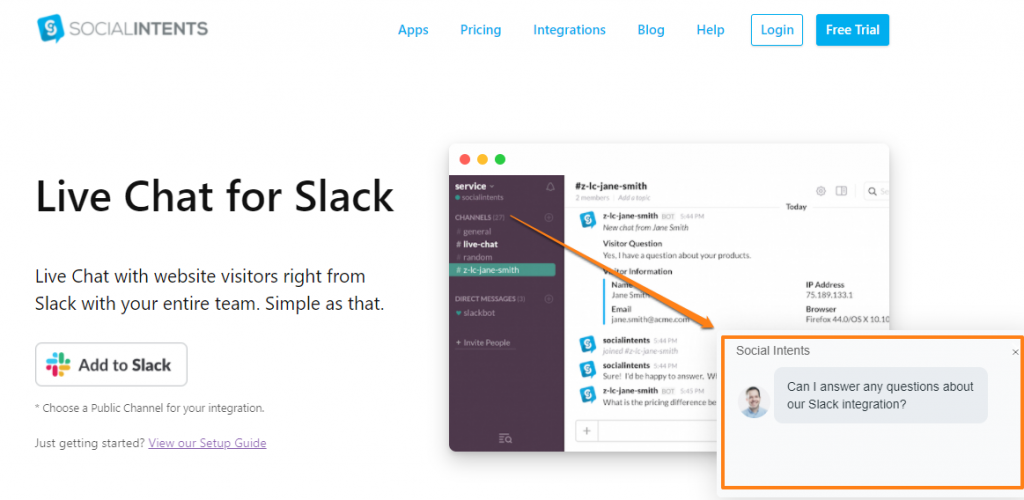
- Use triggers based on visitor activity: Set up live chat triggers based on various factors such as the time spent on a page, the URL visited, and visitor actions. This targeted approach ensures that the web chat is relevant and timely.
- Let human agents handle it: While chatbots can handle frequent questions, the real value comes from professional chat operators who can personalize interactions and handle complex queries. This human touch is crucial for boosting conversion rates.
- Be a resource, not a distraction: Ensure that proactive chats are helpful and not intrusive. For example, if a visitor is in the process of making a purchase, it’s best to let them proceed without interruption unless they seek help.
- A/B test your strategy: Continuously test different approaches to identify the most effective proactive chat strategies. Start by analyzing how long visitors take to click on the live chat button and on which pages they do so.
2. Be mobile-friendly
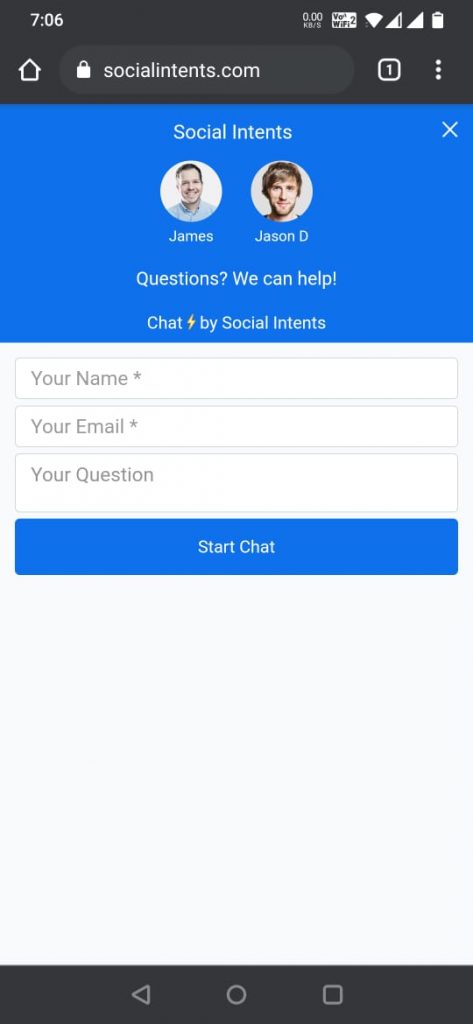
Over 50% of live chat queries come from mobile devices, making mobile optimization crucial. Here are some tips to ensure your live chat is mobile-friendly:
- Choose mobile-optimized software: Select live chat support software designed for mobile use. For example, Social Intents live chat offers a seamless experience on mobile devices.
- Optimize proactive chat triggers: Ensure proactive chat triggers do not obstruct the customer’s view or hinder their browsing experience. Triggers should be subtle and strategically placed.
- Keep the chat interface minimal: Given the limited screen space on mobile devices, keep the chat interface clean and uncluttered. This makes it easier for users to engage without feeling overwhelmed.
- Account for longer response times: Understand that mobile users may take longer to respond due to distractions and notifications on their devices. Be patient and considerate of their environment.
- Enable full-screen chat: Allow users to expand the chat window to full screen for a better viewing and typing experience. Also, ensure that they can switch back to the website without losing the chat conversation.
3. Place live chat across your website
Many websites implement live chat only on the homepage or support page, but to maximize its effectiveness, live chat should be available on multiple pages.
Why is this important? Studies show that 45% of live chat users are more likely to convert on pages other than the homepage. To take full advantage of this, ensure live chat is accessible on all relevant pages of your website.
However, avoid placing it on pages where it might be a distraction, such as the Payment Processing page.
Here are some guidelines you can follow:
- Product and service pages: These are prime locations for live chat as visitors may have specific questions that need immediate answers.
- Landing pages: Including live chat here can help convert visitors who have arrived through marketing campaigns.
- Blog and resource pages: Visitors often have questions or need further information when visiting these pages, making them ideal spots for live chat.
- Checkout process: While live chat can be helpful throughout the checkout process, avoid placing it on the final payment page to prevent distractions.
4. Let visitors leave a message outside business hours
One of the benefits of having an online store is that customers can discover it 24/7. With a live chat feature on your website, people will likely want to ask questions at any time of the day.
Imagine a customer clicking on the live chat button only to find they can’t chat because business hours are over. This experience is similar to walking to a brick-and-mortar store and finding it closed, but potentially even more disappointing because online, they expect to be able to at least message you their question.
Here’s how you can handle this situation effectively:
- Allow message leaving: Ensure your live chat widget lets visitors leave messages outside business hours. This way, they can enter their name, email, and question, ensuring their query is addressed promptly once business hours resume.
- Automated response: Set up an automated response to acknowledge their message. For example: “Thank you for your message! Our team is currently offline, but we will get back to you as soon as possible during our business hours.”
- Follow-up: Make sure to follow up on these messages as soon as your team is available, demonstrating reliability and customer care.
5. Follow live chat etiquette
To increase conversion rates, live chat agents must be professional, friendly, and persuasive. Poorly handled interactions can lead to negative experiences and damaging word-of-mouth for your business.
Training agents to follow a standardized set of rules ensures consistent, high-quality customer support, regardless of the individual agent.
Here are some chat etiquette rules to enhance conversions:
- Answer promptly: Quick responses are essential. Here are tips to reduce waiting times:
- Implement a chatbot: Use chatbots to handle frequently asked questions instantly, preventing chat agents from being overwhelmed by repetitive inquiries.
- Integrate efficient communication tools: Use platforms like Social Intents to integrate live chat with internal communication tools like Slack or MS Teams.
- Use canned responses: Prepare standard responses for common questions to save time and ensure consistency.
- Be human: Personalize the interaction by starting with a friendly greeting, introducing yourself, empathizing with the visitor, and apologizing if necessary. A touch of humor can also make the conversation more engaging.
- Understand the query properly: Ensure you fully comprehend the visitor’s question before responding. This step is crucial for effective communication and resolving issues promptly.
- Maintain a positive tone: Use affirmative language to build confidence. For example, saying “We are the best option for your needs” is more persuasive than “We are one of the options.”
- Ask for feedback: At the end of each chat session, ask the visitor for feedback on their experience. This helps you understand their needs better and adjust your communication strategies to improve conversion rates.
6. Customize chat flow for your sales funnel
Each business requires a unique approach to live chat support, depending on its sales funnel and customer interaction needs.
For instance, an ecommerce site will need to strategically place and manage its live chat differently compared to a service-based business.
Here’s how each can tailor their strategies to fit their individual sales funnels:
Ecommerce:
- Human agents for better conversions: In ecommerce, live human agents often yield higher conversion rates compared to automated bots. This is because customers typically ask varied questions depending on the product, and personalized human responses can better address these inquiries.
- Product-specific queries: Each product may attract different questions, so having knowledgeable agents ready to provide accurate answers can significantly boost conversion rates.
- Dynamic interaction: Human agents can adapt their responses to each individual customer’s need, making them more effective at closing sales.
Service-based businesses:
- Structured chat sequences: Service-based businesses often deal with repetitive questions and longer sales cycles. Advanced AI chatbots can handle common inquiries efficiently, providing consistent and accurate information.
- Proactive engagement: Implement proactive chat on key informational pages, such as service descriptions and pricing pages, to engage potential clients and guide them through the inquiry process.
- Live chat metrics: Success for service businesses can be measured by engagement levels, such as the number of chat interactions leading to form submissions or appointment bookings, rather than immediate purchases.
7. Offer multi-language support
Opt for a live chat system that supports multiple languages. This is especially useful for businesses with a global customer base.
Here’s how multilingual software can boost conversations for your business:
- Accessibility: The inclusivity of multi-language support can attract and retain customers from various regions, expanding your market reach.
- Better user experience: Customers feel more valued and understood when they can comfortably interact in their native language. Use this to your advantage and establish clear communication with a global audience.
With Social Intents, you can make use of live chat software that integrates multi-language support. Here’s how:
- Language detection: Social Intents can automatically detect the visitor’s language based on their browser settings or location. This allows the chat to start in the visitor’s preferred language without any manual intervention or technical knowledge.
- Integrated translation: Social Intents offers real-time translation features, enabling chat agents to communicate with visitors in their native language. This feature ensures that language barriers do not negatively impact effective communication.
- Customizable chat widgets: The chat widget can be customized to support multiple languages. This means the interface, pre-chat forms, and canned responses can all be tailored to different languages.
8. Use a pre-chat form to collect customer details
Implementing a pre-chat questionnaire to gather customer details before initiating a live chat session can benefit both support agents and the sales process. Here’s how:
- Understanding customer queries: By collecting key information upfront, support agents can better understand the nature of the customer’s inquiry before the chat is initiated. This preparation allows agents to prepare more relevant responses, leading to quicker resolution times.
- Qualifying leads: Use the questionnaire to gather details that help in assessing the potential of the lead. Questions about budget, project timelines, and specific needs can filter out high-potential customers. Doing this before the chat helps agents focus their efforts on the most promising prospects that are more likely to convert with the right push.
- Streamlining the sales process: Automatically transfer the collected information to your CRM system, ensuring all data is recorded efficiently. This integration reduces manual data entry and ensures that follow-up actions are well-informed and timely.
9. Equip agents with access to a knowledge base
Providing your live chat agents with access to a comprehensive knowledge base, customer data, and Frequently Asked Questions (FAQs) means that your support team can handle customer queries faster. Here’s why:
- Knowledge base: A knowledge base typically includes data such as product details, troubleshooting guides, and company policies. It serves as a quick reference for agents when addressing customer queries. Quick access to these resources reduces the average waiting time and provides chat operators with precise answers without needing to seek assistance from other departments.
- Customer data: Customer data typically includes previous live chat sessions, purchase history, and personal preferences. An agent can refer to these past purchases or previous issues, demonstrating that the company keeps track of customer history.
- Frequently Asked Questions (FAQs): FAQs provide quick answers to common questions and issues that customers frequently encounter. Agents can directly share these with customers so they don’t waste time crafting each answer from scratch.
10. Avoid negative reviews by addressing dissatisfaction early
You can never truly stop annoyed customers from leaving a bad review. However, an accumulation of negative comments can affect your brand reputation and discourage website visitors.
Here’s how you can prevent frustrated customers from escalating the situation:
- Follow up with dissatisfied customers: After resolving an issue in the chat, follow up with the customer via email or a phone call to ensure their problem was fully addressed and to ask if there’s anything more you can do.
- Train agents in conflict resolution: This includes active listening, empathy, and problem-solving skills. Well-trained agents are better equipped to handle dissatisfied customers calmly and effectively, reducing the chances of negative reviews.
- Offer compensation: When a customer is clearly unhappy, offer compensation such as discounts, refunds, or free services/products as a gesture of goodwill.
So, Does Live Chat Increase Conversions After All?
The data clearly shows that live chat can significantly increase conversion rates. By providing instant, personalized assistance, addressing customer queries in real-time, and offering a seamless support experience, live chat helps guide visitors through the entire customer journey, boosting their confidence in making a purchase.
However, implementing it isn’t just about having the feature on your website.
It’s about taking active steps to optimize its use. From using proactive chat triggers to leveraging resources like a knowledge base, and integrating multilingual support, each live chat tactic contributes to improving customer satisfaction and driving higher conversion rates.
With Social Intents you can deploy a comprehensive live chat solution designed to enhance customer interactions and drive sales.
With features like proactive chat triggers, seamless CRM integration, and multilingual support, Social Intents equips your team to deliver exceptional customer service in minutes.
Start your free trial with Social Intents today and discover the difference live chat can make for your sales.
